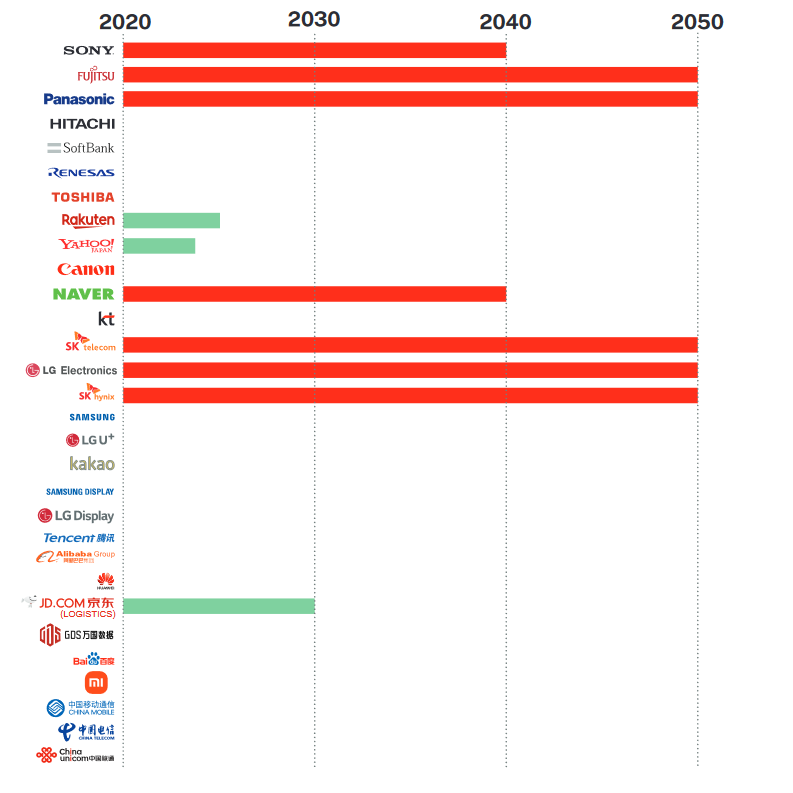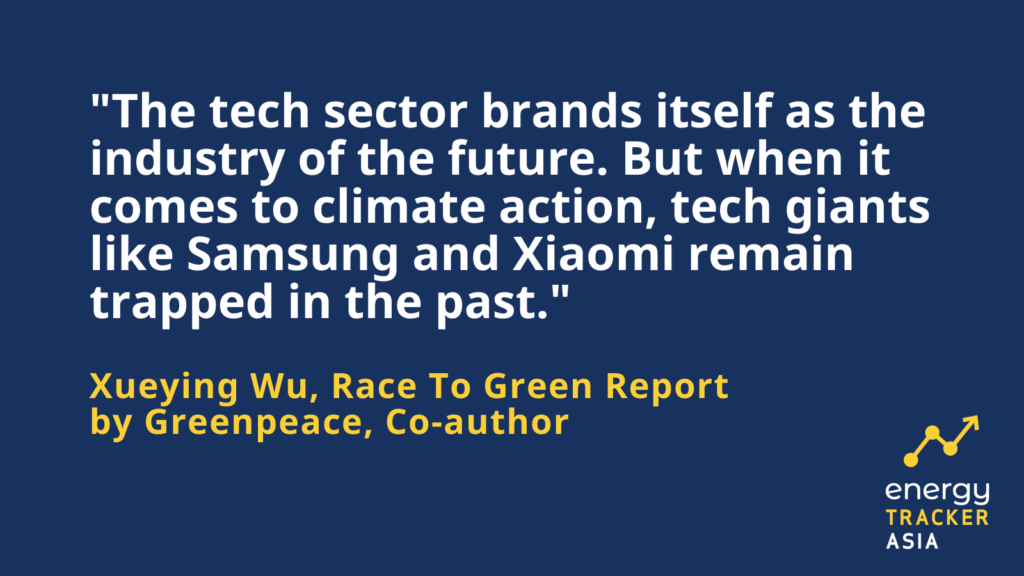The Greenpeace Report and the Mission to Decarbonise Asia’s Tech Industry
07 December 2021 – by Viktor Tachev Comments (0)
The latest Greenpeace report is clear – East Asian tech companies’ decarbonisation efforts are insufficient. Over the past decade, the exponential growth in the industry has led to a sharp increase in the region’s carbon emissions. Mounting plastic waste and forest degradation are also the results of this growth in developing countries of Southeast Asia. Human health and the environment are suffering because of this growth. However, some companies like GDS are leading the way with their climate change and renewable energy commitments. The quicker others follow, the better the industry, its global reputation and Asia’s net-zero prospects.
Asia’s Net-Zero Path and the Role of Tech Companies in Climate Crisis
Tech is booming, especially in Japan and South Korea, both aiming to become carbon-neutral by 2050, while China targets 2060. But the tech industry in their respective countries is amongst the critical obstacles to net-zero.
Currently, the sector is among the fastest-growing sources of carbon emissions in East Asia. And there are no signs of a contraction, especially within China’s data centre and 5G network industries. In 2020, collectively, they consumed a similar amount of power as the Beijing and Shenzhen metropolises combined. Over 60% of the electricity originated from burning coal.
By 2035, China’s data centres and 5G networks carbon emissions will double to 310 million tonnes a year, exceeding France’s total.
If the three countries want to keep their net-zero targets alive, their tech industries must reach 100% renewable energy across the supply chain by 2030.
The Greenpeace International Report – Spotlight on Tech Companies’ Lack of Climate Change Commitments
The Race to Green new report by Greenpeace International ranked the top 30 tech giants from China, Japan and South Korea. The Greenpeace report based scores on their global climate change commitments, actions, transparency and advocacy. The results, however, painted a worrying picture.
No companies pledged for 100% renewable energy across their supply chains by 2030. Those with 100% renewable pledges were far too distant to create speedy impacts.

Of the tech companies in the report, only Japan’s Sony and South Korea’s Naver come close to the 2030 deadline. However, they are only committed to achieving 100% renewables by 2040, with many others not having any commitments, like Samsung and Xiaomi.
Disclosure of renewable energy adoption was also severely lacking. Across the 12 ranked companies, disclosure of information sat at 20%. Only Rakuten and GDS exceeded that mark, with 64.8% and 20%, respectively. Panasonic and Hitachi were rock bottom, both falling below 2.6%, with LG not trailing far behind at 4%. Toshiba, Tencent and Alibaba have not disclosed any data.
As a whole, the report found that the combined electricity, mainly sourced from fossil fuels, used by 30 tech companies was equivalent to Thailand’s electricity use.
“Dirty” By Choice or By Constraints
There are several influencing factors attributed to the lack of action in the fight against global warming. According to the Greenpeace report, internal and external barriers are to blame.
A turbulent energy policy environment and the power market infrastructure across China, Japan and South Korea derail progress. Regulatory barriers to what is known as Power Purchasing Agreements are barriers to companies meeting renewable demands. Further harming progress is the lack of widely available renewable energy certificates.
However, the companies themselves are crucially lacking the motivation to transition to 100% renewable energy. Pointedly, this comes down to a lack of awareness of options, lack of expertise and insufficient pressure from governments.
East Asian tech companies are quiet on their reasons for not beginning their transitions. However, it is no secret that many tech companies view additional investment into renewable energy as a disruptor to existing models and potentially increase the prices of their products and services.
GDS Walking the Talk
GDS, China’s top independent data centre, ranked 24, was slapped with an overall score of D- in Greenpeace’s report. The company’s commitments and transparency received an F, with action and advocacy awarded C- and B-, respectively.
However, in a turn of events, GDS publicly committed to 100% renewable energy and neutrality by 2030. The commitment is a significant step for the company, which so far has been lagging. It now joins industry leaders like Equinix and Chindata, who have already committed to the same goal by 2030.
A pledge from such an influential company in China will likely pressure others like Alibaba, Tencent and Baidu to follow. They are all capable and well-resourced, just lacking will.

Decarbonising the Asian Tech Industry and Fossil Fuel Companies – Mission Possible
For Asia to continue growing and further empower global progress, its tech industry must swiftly decarbonise. Setting targets decades ahead is far too late to positively affect Asia’s energy transition.
“The tech sector brands itself as the industry of the future,” notes Xueying Wu, one of the report’s authors. “But when it comes to climate action, tech giants like Samsung and Xiaomi remain trapped in the past.” The Greenpeace report provides a blueprint for Asian tech companies to find a way out and start again with a clean slate.

by Viktor Tachev
Viktor has years of experience in financial markets and energy finance, working as a marketing consultant and content creator for leading institutions, NGOs, and tech startups. He is a regular contributor to knowledge hubs and magazines, tackling the latest trends in sustainability and green energy.
Read more

